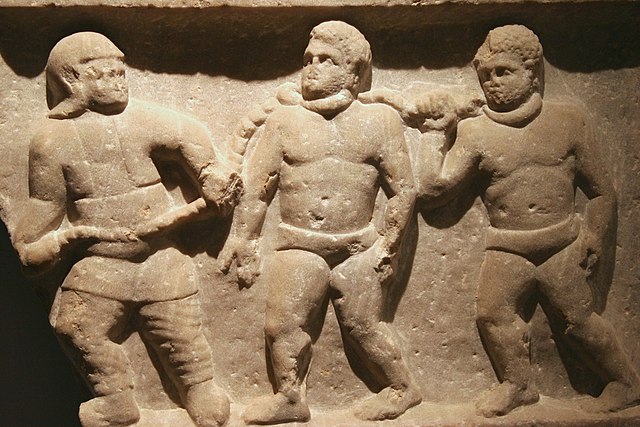The history of slavery spans many cultures, nationalities, and religions from ancient times to the present day. Likewise, its victims have come from many different ethnicities and religious groups. The social, economic, and legal positions of slaves have differed vastly in different systems of slavery in different times and places.
C. 1480 BC, fugitive-slave treaty between Idrimi of Alakakh (now Tell Atchana) and Pillia of Kizzuwatna (now Cilicia).
Ancient Egyptian mummy soles depicting two captive foreigners, a Syrian (left) and a Nubian (right), between 332 BC and 395 c.e. (Ptolemaic or Roman period).
Slaves in chains during the period of Roman rule at Smyrna (present-day İzmir), 200 AD.
13th century slave market in Yemen.
History of slavery in the Muslim world
The history of slavery in the Muslim world began with institutions inherited from pre-Islamic Arabia. The practices of keeping slaves in the Muslim world nevertheless developed in radically different ways in different Muslim states based on a range of social-political factors, as well as the more immediate economic and logistical considerations of the Arab slave trade. As a general principle, Islam encouraged the manumission of Muslim slaves as a way of expiating sins, and many early converts to Islam, such as Bilal, were former slaves. However, Islam never banned the practice, and it persisted as an important institution in the Muslim world through to the modern era.
Bilal ibn Ribah (pictured, atop the Kaaba) was an Ethiopian slave, emancipated on Muhammad's instruction, and appointed by him to be the first official muezzin.
13th-century slave market in Yemen
Dhows were used to transport goods and slaves to Oman.
A depiction of slaves being transported across the Sahara desert







